Centre for Functional Materials (CFM)
Virtual Seminar Series on Functional Materials
2024
1. 28th February 2024 (Wednesday) at 03:00 pm - 04:00 pm IST, Venue: MS Teams
Topic: Smart Materials and Devices for Global Wellness”(A Special Focus on Biomaterials)
Prof. D. Haranath
Department of Physics, NIT Warangal, Hanumakonda 506004, Telangana
- Venue
- Read Abstract
- About the Speaker
Venue: MS Teams
In the pursuit of advancing global wellness, the integration of smart materials and devices has emerged as a transformative paradigm. This talk explores the pivotal role that biomaterials play within this framework, delving into their unique properties and applications in enhancing healthcare, environmental sustainability, and overall human wellbeing. The talk unfolds by elucidating the fundamental principles of smart materials, encompassing their responsiveness, adaptability, and intelligent functionalities. It then shifts focus to biomaterials, underlining their innate compatibility with biological systems and the consequent potential for revolutionary advancements in medical diagnostics, therapeutics, and prosthetics. With a comprehensive inspection of current research and technological breakthroughs, the talk highlights the deployment of smart biomaterials in wearable devices, implantable sensors, and personalized healthcare solutions, etc. Furthermore, the exploration extends beyond healthcare, addressing the broader implications of smart biomaterials in environmental sustainability. From biodegradable implants to eco-friendly sensors, the integration of biomaterials highlights a commitment to holistic wellness, considering the individual health. Finally, this talk advocates for the continued exploration and development of smart materials, with a specialized emphasis on biomaterials, as a catalyst for advancing global wellness. By harnessing the synergies between materials science, biotechnology, and healthcare, society can anticipate a future where smart materials and devices contribute significantly for improved health, sustainability, and overall quality of life on a global scale.
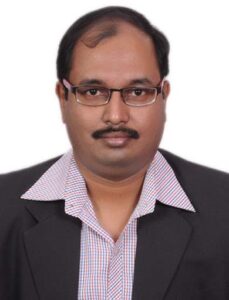 Prof D Haranath
is currently working as a Professor of Physics at the National Institute of Technology (NIT) Warangal, India. Before that, he served as Principal Scientist at CSIR-National Physical Laboratory, New Delhi for about 18 years. He is the recipient of many awards and honors in Physical Sciences including NPL's Young Scientist Award in 2003, CSIR Young Scientist Award in 2004, DST's BOYSCAST Fellow Award in Physical Sciences in 2006, VIRA Distinguished Scientist of the year 2016, Fellow of Luminescence Society of India in 2017, Academic Audit Member of VNIT (Nagpur)-2017, Transfer of Technology Award (2018), Visiting Scientist for Nanotheranostics Inc.- USA (2019-2024), Grassroot Innovators Virtual Mela Award (2020), National Innovative Research Excellence Award- 2022 in Physics, World Top 2% Scientists in Materials Science-2021-2023 etc.
Prof D Haranath
is currently working as a Professor of Physics at the National Institute of Technology (NIT) Warangal, India. Before that, he served as Principal Scientist at CSIR-National Physical Laboratory, New Delhi for about 18 years. He is the recipient of many awards and honors in Physical Sciences including NPL's Young Scientist Award in 2003, CSIR Young Scientist Award in 2004, DST's BOYSCAST Fellow Award in Physical Sciences in 2006, VIRA Distinguished Scientist of the year 2016, Fellow of Luminescence Society of India in 2017, Academic Audit Member of VNIT (Nagpur)-2017, Transfer of Technology Award (2018), Visiting Scientist for Nanotheranostics Inc.- USA (2019-2024), Grassroot Innovators Virtual Mela Award (2020), National Innovative Research Excellence Award- 2022 in Physics, World Top 2% Scientists in Materials Science-2021-2023 etc. 2023
1.13th December 2023 (Wednesday) at 04:00 pm - 05:00 pm IST, Venue: Google Meet
Topic: Ultrafast optical and terahertz control of magnetic materials
Dr. Rajasekhar Medapalli
Physics Department, Lancaster University, Lancaster LA1 4YW, United Kingdom
- Venue
- Read Abstract
- About the Speaker
Venue: Google Meet
The subject of ultrafast magnetism mainly deals with exploiting interactions amongst the fundamental reservoirs of energy and angular momentum in materials: charge, spin, and lattice. In magnetic materials, investigating the interactions at ultrashort timescales has led to the discovery of many interesting phenomena such as ultrafast demagnetization, laser-induced magnetization reversal (all-optical switching), and super-diffusive spin-transport. I will give an overview of all-optical switching and terahertz emission obtained using ultrashort laser pulses. In particular, I will discuss the underlying mechanism governing the helicity (circular polarization)- dependent optical switching of ferromagnetic materials [1]. Furthermore, I will show how laserdriven terahertz emission can reveal sensitive information about time-varying magnetic state of a material. As an example, the study of laser-induced spin currents revealing ultrafast kinetics of laser-induced magnetic (antiferromagnetic to ferromagnetic) phase transition in FeRh thin films will be discussed [2,3].
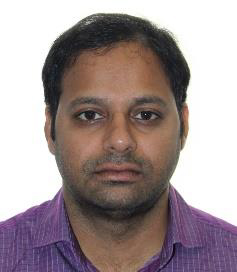 Dr. Rajasekhar Medapalli
is currently working as a Research Fellow at Lancaster University, UK. Prior to this, he also worked as a postdoctoral researcher at Center for Memory and Recording Research lab at University of California San Diego in USA during 2014-2019. Dr. Medapalli received his Ph.D. in Ultrafast Magnetism (experimental condensed matter physics) from Radboud University Nijmegen, The Netherlands in 2014. He received M.Tech. degree in Nanotechnology from Amity University in 2009 and M.Sc. degree in Physics from Andhra University in 2007. His research interests lie at the intersection of ultrafast control of magnetic materials and integrating them in memory devices suitable for energy efficient ultrafast spintronic technologies.
Dr. Rajasekhar Medapalli
is currently working as a Research Fellow at Lancaster University, UK. Prior to this, he also worked as a postdoctoral researcher at Center for Memory and Recording Research lab at University of California San Diego in USA during 2014-2019. Dr. Medapalli received his Ph.D. in Ultrafast Magnetism (experimental condensed matter physics) from Radboud University Nijmegen, The Netherlands in 2014. He received M.Tech. degree in Nanotechnology from Amity University in 2009 and M.Sc. degree in Physics from Andhra University in 2007. His research interests lie at the intersection of ultrafast control of magnetic materials and integrating them in memory devices suitable for energy efficient ultrafast spintronic technologies. 2.27th September 2023 (Wednesday) at 12:00 pm - 01:00 pm, Venue: MS Team
Topic: A Journey Through Solvent-free Synthesis of Functional Nanomaterials in Realizing Enhanced (Photo) catalytic Performance
Dr. Ramakrishnan Ganesan
Department of Chemistry, BITS Pilani Hyderabad Campus
- Venue
- Read Abstract
- About the Speaker
Venue: MS Teams
Synthesis plays a crucial role in tailoring material properties. Many synthetic methods rely on solvents, which can hinder scalability and limit material performance. This talk will focus on materials synthesis in two domains: (1) Nanocomposites formed by two photocatalytic semiconductors in a heterojunction and (2) Weakly-capped gold nanoclusters (Au NCs). In the first case, the use of surfactant-based precursors in overcoming the cohesive forces to obtain highly-dispersed functional nanocomposites shall be discussed, while in the second case a pseudo-solventless synthesis of Au NCs, leading to the exposure of maximum surface sites in achieving record-high catalytic activity shall be discussed. Additionally, the talk will also delve into applications of these materials in bactericidal contexts.
 Prof. Ramakrishnan Ganesan
Prof. Ramakrishnan Ganesan
Prof. Ramakrishnan Ganesan, Professor of Department of Chemistry, has been with Birla Institute of Technology and Science, Pilani, Hyderabad Campus, India since 2012. He-obtained his Master's degree from Anna University and Ph.D. from Korea Advanced Institute of Science and Technology (KAIST 2006). He also served as Scientific employee from 2008-2010 at Helmholtz-Zentrum Geesthacht (HZG), Teltow, Germany as a Scientist, and at Institute of Materials Research and Engineering (IMRE), Singapore during 20I0-2012. His expertise lies in the fields of 'nanomaterials & nanotechnology', polymers, and (patterned) thin film fabrication. Currently, his group is engaged in the development of function anomatedals for various applications including photocatalysis, biosensing, and bioremediation
3.30th August 2023 (Wednesday) at 02:30 pm - 04:00 pm, Venue: MS Team
Topic: Nanomaterials based Heterogeneous Catalysis for Energy and Environmental Applications
Prof.Venkata Krishnan
School of Chemical Sciences, Indian Institute of Technology-Mandi, Kamand, Mandi, Himachal Pradesh
- Venue
- Read Abstract
- About the Speaker
Venue: MS Teams
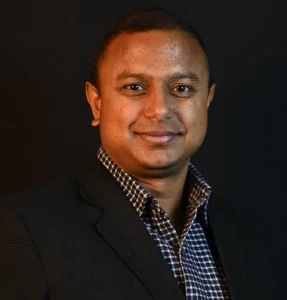 Prof. Venkata Krishnan
Prof. Venkata Krishnan
Prof. Venkata Krishnan completed his Ph.D. in Chemistry in 2006 from University of Stuttgart, Germany after completing his B.Sc. and M.Sc. degrees from PSG College of Technology, Coimbatore, Tamil Nadu, India. Subsequently, he worked as a postdoctoral researcher at University of Pennsylvania, U.S.A. from 2006 to 2010 and then as a research associate at National Institute for Materials Science (NIMS), Tsukuba, Japan from 2010 to 2012. He joined as a faculty at the Indian Institute of Technology (IIT) Mandi in April 2012 and is currently a full professor. His research group is mainly working in the field of Green Chemistry and Heterogeneous Catalysis for Energy and Environment Applications. He has successfully guided 11 Ph.D. and 26 M.Sc. students and is currently guiding 6 Ph.D. and 5 M.Sc. students, in addition to several short-term research interns. He has published more than 175 articles in well reputed international journals and is also a reviewer for several scientific journals. He has been bestowed with several awards, including DST INSPIRE faculty award, IIT Mandi foundation day award for excellence in teaching, MANA research fellowship, DoE postdoctoral fellowship, DFG doctoral fellowship, DAAD visiting scholar fellowship, etc. In addition to teaching and research, he has also served IIT Mandi in various administrative positions, such as first warden of the hostel in main campus, founding coordinator of Advanced Materials Research Center (AMRC), Associate Dean Research and most recently as Dean of Sponsored Research, Industrial Consultancy and International Relations (SRIC & IR), Director of IIT Mandi Catalyst (a technology business incubator) and Director of IIT Mandi iHub and HCI foundation (a technology innovation hub). Apart from academics, he likes reading books and is interested in linguistics.
4.28th July 2023 (Friday) at 11:00 AM (IST), Venue: MS Team
Topic: Bipolar Resistive Switching Characteristics of Transition Metal Oxide by Atomic Layer Deposition
Dr. Minjae Kim
Postdoctoral Researcher, University Southern California, Los Angeles, USA
- Venue
- Read Abstract
- About the Speaker
Venue: MS Teams
Title: Bipolar Resistive Switching Characteristics of Transition Metal Oxide by Atomic Layer Deposition
Abstract: Memristor, a combination of memory and resistor, can be described as a simple Metal-Insulator-Metal structure. It plays a role of a variable resistance function which can be exploited to store information and used as a memory. The stored information can be maintained even when the applied voltage is turned off. Therefore, memristor devices can mimic the human brain more efficiently and intuitively than conventional CMOS–based devices, which have significant advantages in implementing neuromorphic devices. Memristors based on resistive random-access memory (RRAM) were mainly studied using the filament type resistance change mechanism. However, in the case of the filament type memristor, it is difficult to control the filament during forming process, leading to a problem of reproduction and device performance reliability. In addition, a forming process requires more power and scaling of the device becomes demanding because the current amplitude depends on the filament size regardless of the size of the device. Thus, the purpose of this study is to overcome the shortcomings of the filament type memristor, improve interface type memristor devices, which is expected to exhibit excellent synaptic characteristics.
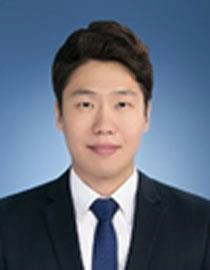 Dr. Minjae Kim
Dr. Minjae Kim
Dr. Minjae Kim is currently working as a Postdoctoral Researcher at University Southern California, Los Angeles, USA. He earned his Ph.D. from Department of Material Science and Engineering, Yonsei University, South Korea in 2022. During his doctoral period, he carried out the synthesis of transition metal oxide (TaOx, TiO2, Al2O3, ZrO2, ZnO etc.) using the atomic layer deposition. Dr. Minjae Kim has authored and coauthored 22 peer reviewed research publications in reputed journal such as Materials Today, ACS Applied Materials & Interfaces, Applied Materials Today, and APL Materials and 9 patents were also registered during his Ph.D. degree. Based on the above achievements, Dr. Min-jae Kim, won the 2019 "Best Researcher for Future Semiconductor Device Source Technology Development Project" and "15th Graduate Student Excellence Paper" award.
5.27th June 2023 (Friday) at 11:00 AM (IST), Venue: MS Team
Topic: Two-dimensional (2D) transition metal dichalcogenides/GaN hybrid heterojunction photodiodes
Dr. V. Janardhanam
Assistant Research Professor, Semiconductor Physics Research Center, Chobuk National University, South Korea
- Venue
- Read Abstract
- About the Speaker
Venue: MS Teams
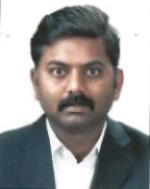 Dr. V. Janardhanam
Dr. V. Janardhanam
has received his Ph.D degree in 2009 from Sri Venkateswara University Tirupathi, Andhra Pradesh He went as a post doc in 2009 and currently working as post doctorate and was Assistant Research Professor at Semiconductor Physics Research Center, Cho n buk National University, South Korea for the last 13 years. He has published 110 research articles i n various international peer reviewed journals. He published two book s on studies o f Schottky contacts on Indium phosphide for microelectronic device applications, LAP LAMBERT academic publish ers Germany. He attended for 35 international conferences and 13 national conferences and presented his research findings. His h index is 22 and i10 index is 54 with total citation index above 1500. He is working as reviewer for 28 international reputed journals. Als o he is a Guest editor for Electronics ( journal. He has mentor ed the students from South Korea and Malaysia about the fabrication of semiconductor electronic/optoelectronic devices. He is expert in synthesis and characterizations of thin film materi als and devices His areas of research include Materials Science Engineering , Physics , Electronics and Energy. He made significant contribution s in the fields of post Si CMOS devices, III V semiconductors devices, Wide bandgap semiconductor based photod iodes and high power devices , 2D materials based photodiodes, organic and inorganic hybrid composite based devices etc
6.29th May 2023 (Monday) at 09:30 am - 10:30 am IST, Venue: Google Meet
Topic: Spintronics, Ferroelectrics, and Multiferroics: Potential Contenders for Upcoming Memory Technologies
Dr. Bhagwati Prasad
Assistant Professor, Department of Materials Engineering, Indian Institute of Science
- Venue
- Read Abstract
- About the Speaker
Venue: Google Meet
In the past few decades, a steady drive has been underway to miniaturize both the logical and storage components of microelectronic devices into the nano range, with the dual aim of boosting speed and storage density. However, this downsizing process has led to substantial energy losses in the form of heat, a critical problem plaguing the microelectronic industry. In this presentation, I will unveil my recent research on energy-efficient, beyond-CMOS based Memory devices. The discussion will center on oxide spintronic and ferroelectric devices, specifically those involving electric field control of magnetism in multiferroic-based spintronic devices. These devices show promising potential to operate within an energy range of atto-Joule (aJ) per bit, which is a whopping 1000 times more efficient than the current cutting-edge technology in the semiconductor industry.
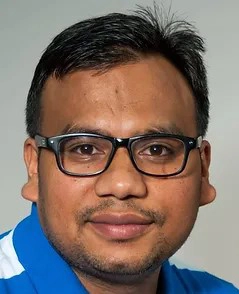 Dr. Bhagwati Prasad
Dr. Bhagwati Prasad
Assistant Professor Department of Materials Engineering Indian Institute of Science Bangalore-560012, INDIA Dr. Bhagwati Prasad completed his M. Tech. (Materials Science) from Indian Institute of Technology, Kanpur, India in 2008 and Ph. D. (Materials Science) in 2015, University of Cambridge, UK. He worked as a Sr. Researcher Manager at Tata Steel Limited, Jamshedpur, India from July 2008 - October 2011. After completing his doctoral degree he worked as a Scientist at Max Planck Institute for Solid-State Research, Stuttgart, Germany from May 2015 – October 2016. He joined University of California, Berkeley, USA as a Sr. Postdoctoral Researcher from November 2016 – October 2018 and Principal Research Scientist; Western Digital, San Jose, USA from November 2018 – October 2021. In October 2021 he joined as a Assistant Professor in Materials Engineering Department at IISc Bangalore. He is also recipient of many awards like, Nehru Trust for Cambridge University Fellowship (2011-2014)- University of Cambridge, UK., Academic Excellence Award (2007-2008): M.Tech. programme at Indian Institute of Technology Kanpur, India. His research interests are Electronic and Magnetic Materials, Spintronics, Iontronics, Ferroelectrics and Magnetoelectrics, AI Hardware materials and devices, Neuromorphic computing, Non-volatile memory and DNA Storage, 3D sensors for Virtual and Augmented realities. He has published 30+ Research papers published in reputed refereed journals (Nature, Nature Materials, Advanced Materials, Nano Letters, Nature Communications, Science Advances, Applied Physics Letters, etc.), 34 patents(30 US Patents and 4 Indian Patents). He is also the reviewer for 25+ journals (Nature publishing group journals, Wiley journals, American Institute of Physics journals, Elsevier journals, Taylor and Francis Ltd. Journals, and MDPI journals). He is also a member of IEEE, IEEE magnetics society, St John's College, University of Cambridge (Life time), Indian Physics Association (Life time), Cambridge Philosophical Society (2012-2015) and Institute of Physics (2012-2016). He was also the Guest Editor at APL Materials (Special topic: Materials Challenges for Nonvolatile Memory) fromApril 2021- September 2021.
7.05th May 2023 (Friday) at 04.00 to 05.00 PM (IST), Venue: MS Teams
Topic: "Heusler Alloys from the Perspectives of the Spintronics Applications based on First principles Calculations"
Dr. Tufan Roy
Assistant Professor, Tohoku University, Sendai, Japan
- Venue
- Read Abstract
- About the Speaker
Venue: MS Teams
Magnetic Tunnel Junction (MTJ) has been attracting the attention of researchers because of its spintronics applications such as memory devices. The effect of tunneling magnetoresistance has been utilized in the MTJ. Till date, the highest TMR ratio has been reported for Heusler electrode, namely Co2(Mn,Fe)Si and MgO as the barrier material, which is about 2600% at the low temperature [1]. However, the TMR ratios have a remarkable temperature dependence, which acts as a hindrance in its practical applications. In this presentation I will discuss the potential of quaternary Heusler alloy-based electrodes in MgO-based MTJs
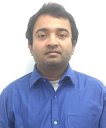 Dr. Tufan Roy
Assistant Professor, Tohoku University, Sendai, Japan
Email : tufanroyburdwan@gmail.com
https://scholar.google.com/citations?user=Q63epwgAAAAJ&hl=en
Dr. Tufan Roy
Assistant Professor, Tohoku University, Sendai, Japan
Email : tufanroyburdwan@gmail.com
https://scholar.google.com/citations?user=Q63epwgAAAAJ&hl=en
Dr. Tufan Roy, is currently working as an Assistant Professor at Tohoku University, Sendai, Japan. He earned his M.Sc. in Physics from Burdwan University, West Bengal and Ph.D. from Raja Ramanna Centre for Advanced Technology (RRCAT), Indore in 2017. He has previously worked as a Postdoctoral Research Associate at Tohoku University, Sendai, Japan (2018 –2021). His current research area focuses on Heusler alloy, First-Principle Calculations, Spintronics and Topological Materials. Dr. Tufan Roy has authored and coauthored 30 peer reviewed research publications.
8. 31st March 2023 (Friday) at 03.00 PM to 04.00 PM (IST), Venue: MS Teams
Topic: "Structural and magnetic analysis of all-d-metal Heusler alloys"
Dr. Tarak BACHAGHA
Postdoctoral Fellow, Department of Physics,
International Center for Quantum and Molecular Structures (1CQMS),
Shanghai University, P. R. China
- Venue
- Read Abstract
- About the Speaker
Venue: MS Teams
Cooling systems used today are based on gas compression/expansion technology. However, these systems have the disadvantage that if the gas escapes through a break or because the useful life of the system ends, it contaminates the environment. Due to this, intensive research is currently being carried out on the development of new refrigeration technologies that are more energy efficient and do not pollute the environment and that are capable of satisfying and maintaining future needs in terms of cooling systems, whether they are refrigerators or refrigeration systems of air condition. One of the solid-state refrigeration alternatives is the so-called magnetic refrigeration, which is based on the magnetocaloric effect (MCE). Recently, Ni-Mn-Ti Heusler alloys have been the subject of study because of their high MCE. It shows one of the highest values of maximum magnetic entropy variation ΔSM,max at room temperature (RT) reported in the literature for a magnetic field variation. Therefore, it is of current interest to study this kind of materials to evaluate their potential as working substances for the development of magnetic refrigeration systems at RT. So, we preferred to dope the d-group elements in these Heusler alloys. The effect of Zn and Fe additions on the MCE and martensitic transformation temperatures in Ni50Mn35Ti15 Heusler alloys showed excellent magneto-functional properties (ΔSM and RC) make these all-d-metal Heusler alloys attractive in the applications of magnetic refrigeration.
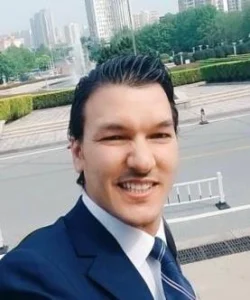 Dr. Tarak Bachagha
Dr. Tarak Bachagha
Postdoctoral Fellow, Department of Physics, International Center for Quantum and Molecular Structures (ICQMS), Shanghai University, P. R. China Working as a postdoctoral research fellow in Department of Physics, Shanghai University, China. He completed his Ph.D. from Sfax University (Tunisia) and Girona University (Spain) in 2015. During his Ph.D., he had been working on Heusler alloys. His research interest areas are based on Magnetic materials, Magnetic shape memory alloys, Heusler alloys, Materials characterization, Magnetic and mechanical properties, Powder metallurgy, Thermal properties and fracture features of Metals. He also has experience in teaching as an Assistant Professor in Sfax University, Tunisia. He has several publications in various Internationals SCI journals and many national and international conferences. He is a regular reviewer of in SCI Journals: Journal of Thermal Analysis and Calorimetry, Journal of Nanoscience, and Inter J Adv Manuf Techno. And, Review member in MDPI Journals: Metals, Materials, Magnetism, Crystals, Catalysts, Energies, and Nanomaterials. He is a Guest Editor of Special Issue in Magnetism Journal "Magnetocaloric Effect: Theory and Experiment in Concert.
9.28th February 2023 (Tuesday) at 10.00 to 11.00 AM (IST), Venue: MS Teams
Topic: Magnetoelectric/Ferroelectric Nanostructures for Nanoelectronics Device Applications
Dr. Dhiren K. Pradhan
Postdoctoral Research Associate, University of Pennsylvania, USA
- Venue
- Read Abstract
- About the Speaker
Venue: MS Teams
Multiferric - Magnetoelectrics (MF- ME) might hold the future for the ultimate memory, spintronics, energy and other multifunctional devices as they exhibit simultaneous ferroelectric and ferromagnetic behaviors and permit control and switching of the magnetic order parameters via electric field, and polarization with magnetic field. Most of the single-phase materials exist in nature are only multiferroic (either ferroelectric and/or magnetic transitions) at cryogenic temperatures. Due to the large independencies between ferroelectric and magnetic ordering temperature, the magneto electric coupling is found to be small. Maximizing ME coupling, key potential that has recently gained enormous interest for beyond Moore's exploration. To increase the magnitude of ME the coupling and to realize the critical temperatures above room temperature, magnetoelectric composite structures are envisioned. Composite structures of ferroelectric materials with large polarization and piezoelectric coefficients, magnetic materials with large magnetization, high magnetostriction, high resistivity, Tc above room temperature produce a strong ME coupling above room temperature. Compared to classical semiconductor solar cells, the photoexcited carriers in ferroelectrics are spontaneously separated because of the inversion symmetry breaking and allows photovoltages larger than the bandgap, which might enable the efficiencies beyond the maximum possible in a conventional p–n junction solar cell. The ferroelectric, piezoresponse force microscopy (PFM), bulk photovoltaic and tip induced photovoltaic properties of single phase multiferroic thin films will be discussed.
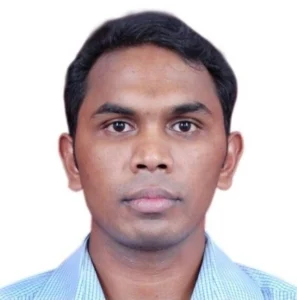 Dr. Dhiren K Pradhan, Ph.D.,
Dr. Dhiren K Pradhan, Ph.D.,
Postdoctoral Research Associate, University of Pennsylvania, Philadelphia, PA 19104, USA Currently working as a Postdoctoral Research Associate in Department of Electrical and Systems Engineering at University of Pennsylvania, USA. He earned his Ph.D. in Materials Physics from University of Puerto Rico, San Juan, U.S.A. in July 2016. He has previously worked as a Postdoctoral Research Associate in Center for Nanophase Materials Sciences at Oak Ridge National Laboratory, USA (from December 2019 – December 2022) and Geophysical Laboratory, Carnegie Institution for Science, USA (from March 2017- August 2019). His current research area focuses on Ferroelectric Non-volatile Memory, Quantum Materials, Piezoelectrics and Ferroelectrics, Hyperferroelectrics, Dielectrics, Polar metals, Scanning Probe Microscopy, Nanofabrications, Interface Engineering, Oxide Heterostructures and Superlattices, Magnetism, Magnetoelectrics, 2D materials, Strongly Correlated Oxides, Polymer Composites, Ferroelectric nanostructures for photovoltaic applications, Energy applications of nanostructured materials. Dr. Dhiren K Pradhan has authored and coauthored 62 peer reviewed research publications and 3 book chapters. He is also serving as an Associate Editor in Frontiers in Materials: Quantum Materials since January 2022.
10.23rd January 2023 (Monday) at 10.00 to 11.00 AM (IST), Venue: MS Teams
Topic: Science and Technology of Advanced Functional and Quantum Materials
Dr. M. Parans Paranthaman
Corporate Fellow, Oak Ridge National Laboratory, Oak Ridge, Tennessee USA
Professor, Bredesen Center, Univ. of Tennessee, Knoxville USA
- Venue
- Read Abstract
- About the Speaker
Venue: MS Teams
With growing interest in electrification from clean energy technologies, such as wind power, and the use of pure electric powertrains in various applications, the demand for next-generation, high-performance magnetic materials has risen significantly. Electrical machine design for these applications is facing challenges in terms of meeting very demanding metrics for power densities and conversion efficiencies, thereby motivating the exploration of advanced materials and manufacturing for the next generation of lightweight ultra-efficient electric machines. The main goal of our research is to fabricate near-net shape high-performance permanent magnets, reduce the criticality of Nd, Dy, etc. by minimizing the waste generation associated with magnet manufacturing, and reduce the overall cost. Extrusion based big area additive manufacturing (AM) process is utilized for fabrication of dense anisotropic bonded magnets. High loading fraction (70 vol.%) of magnequench anisotropic Nd-Fe-B powder in nylon was used for preparing anisotropic bonded magnets. A higher energy product of ~143.2 kJ/m3 is obtained for the post printed magnetic field aligned at 1-3 Tesla. These findings make an important step towards the fabrication of gap magnets with energy product excelling current commercial Nd-Fe-B bonded magnets and approaching the performance of Sm-Co sintered magnets. I will highlight the current status of AM of large electrical machines, AM process selection guidelines, hybrid printing technologies, and the associated opportunities and challenges.
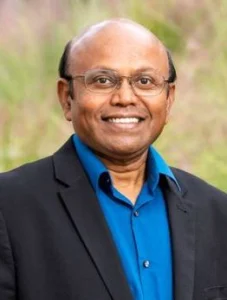 Dr. M. Parans Paranthaman
Dr. M. Parans Paranthaman
Dr. Parans Paranthaman, Ph.D. is a corporate fellow in the Chemical Sciences Division of Oak Ridge National Laboratory (ORNL). He earned his Ph.D. in materials science and solid-state chemistry from the Indian Institute of Technology, Madras. He worked as a postdoctoral fellow with 2019 Chemistry Nobel Prize winner John Goodenough at the University of Texas, Austin and a Research Associate with Allen Hermann at the University of Colorado, Boulder. He joined the Chemistry Department at ORNL in May 1993. His present research interests center on the development of additive manufacturing of N95 fabrics and antiviral coatings, fabrication of wide bandgap semiconductor devices, quantum materials synthesis and characterizations, additive manufacturing of rare earth permanent magnets for motors and generators, lithium separation from geothermal brine, clay minerals, recycled lithium-ion batteries, recovery of carbon from recycled tires for clean energy applications, and development of electrode materials for energy storage applications. Dr. Paranthaman is a Fellow of the National Academy of Inventors, Materials Research Society, AAAS, American Physical Society, American Ceramic Society, ASM International, and the Institute of Physics. He was named the “Top Scientist of the Year” at ORNL in 2019 and has won several more awards including many DOE “Outstanding Mentor” awards, eight “R&D 100” awards, and three national and two regional “Federal Laboratory Consortium (FLC)” awards. He was named the Lockheed-Martin (ORNL) “Scientist of the Year” in 1997. He was also named ORNL “Inventor of the Year” in 2016. Since 2004, he is one of the associate editors for the Journal of American Ceramic Society. He is also starting as the editor for Journal of Alloys and Compounds. Dr. Paranthaman has authored or co-authored more than 450 journal publications with over 22,260 citations and an “h-index” of 73. He holds 56 issued U.S. patents spanning more than 90 inventions related to his research. He has licensed his technologies to more than ten industries for commercialization. Between 1999 and 2009, he was ranked #2 in worldwide citations in high temperature superconductivity research. He has also coedited several books and co-organized several conferences and workshops. He has mentored over 100 students, visitors, postdoctoral researchers, and early career researchers. In addition, he has presented several invited talks and keynote speeches. He leads the ORNL Corporate Fellow Council, several internal and external committees, and previously participated in the National Academy of Inventors Fellow Selection Committee member.
2022
1. 22nd December 2022 (Thursday) at 2.30 PM - 4.00 PM (IST), Venue: MS Teams
Title: Importance of Understanding Ultrafast Reactions in Energy Conversion
Dr. S. Easwaramoorthi
Principal Scientist
Inorganic & Physical Chemistry Laboratory CSIR-Central Leather Research Institute
- Venue
- Read Abstract
- About the Speaker
Venue: MS Teams
The conversion of ever-abundant sunlight into a useful form of energy is timeless allure since it is renewable with a negligible carbon footprint. The process starts with the absorption of light, generation of charge carriers, charge transport, and consequently, conversion into electricity. The process is similar to natural photosynthesis and involves different components, from harvesting the light to converting it to electricity. The process efficiency has been understood from the ratio of the incident photon to current conversion efficiency, which is predominantly influenced by several sequential processes, including light absorption, charge carrier generation, charge injection, charge recombination, sensitizer regeneration, etc. The time scale of the individual process occurs from the femtosecond to microsecond/millisecond time scale, thus, unraveling the time scale is essential to develop new material, and optimizing the device conditions is of paramount importance to realize the device's potential. Thus, the present lecture will be focused on the nature of the ultrafast events that happen with natural as well as artificial photosynthetic systems and their evaluation using time-resolved spectroscopic techniques. Ultrafast transient absorption and time-resolved fluorescence spectroscopic techniques and their applications in evolving photochemical and photophysical processes in photoinduced reactions, in which the fundamental charge carrier dynamic processes include interfacial electron transfer, singlet excitons, triplet excitons, excitons fission, and recombination will be discussed.
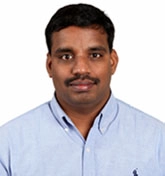
Dr. S. Easwaramoorthi did his M.Sc. and M.Tech. from Banaras Hindu University and Indian Institute of Technology respectively. Then he moved to National University of Singapore to do his Ph.D. After successfully finishing his Ph.D. he joined as Research Scientist at Institute of Materials Research and Engineering, A*STAR to continue his research on thin film devices, Scanning Probe Microscopy/Spectroscopy. He returned to India in 2011 to join National Physical Laboratory in NewDelhi and since then he is working as Principal Scientist in NPL Delhi. Currently, he is working on Topological insulators and 2D materials; Semiconductor physics: III-nitrides wide band gap materials and his primary expertise is on Scanning probe microscopy: STM and AFM; Device fabrication: Photodetectors. He has published >70 publication (reputed journals) and 1 Patent. Guided PhD students - 4 Ongoing - 4 Projects - completed 2 ongoing 1
2.30th November 2022 (Wednesday) at 11:30 am - 12:30 pm, Venue: MS Teams
Title: Epitaxial III-nitrides nanostructures for optoelectronic applications
Dr. Sunil S. Kushvaha
Principal Scientist
ICSIR-National Physical Laboratory, New Delhi, India
- Venue
- Read Abstract
- About the Speaker
Venue: MS Teams
One-dimensional (1D) nanorods or nanowires, 2 D nanowalls network (NWN), nanocolumns (NCs), and 0-D quantum dots or clusters of semiconductors exhibit different physical, chemical, electronic and optical properties compared to their bulk counterpart. Among various semiconducting materials, III-nitride (AlN, GaN, InN and their alloys) semiconductors stand out as one of the most popular materials due to their excellent physical and optoelectronics properties. The tunable band gap properties of GaN with minimum variation in lattice parameters with Al or In materials have been targeted for various high-level technological application perspectives in high efficient full color-spectrum light emitting diodes (LEDs), solar cells, high power electronics devices and ultra-violet photo-detectors (PDs), photoelectrochemical (PEC) water splitting, among others. Here, various GaN nanostructures such as nanorods, porous NWN, islands and thin films were grown using laser assisted molecular beam epitaxy (LMBE) on sapphire-based substrates and flexible metal foils. The metal-semiconductor-metal (M-S-M) UV photodetectors have been fabricated on GaN thin film, nano-columns and nanowall networks grown on GaN sapphire-based substrates. The PEC measurement performed on GaN NCs on Nb foils under standard conditions showed the effective photo-catalyst nature. The efficiency of PEC electrode enhancement was observed in the case of reduced graphene oxide film coated on GaN NCs. The hybrid GaN nanostructures showed promising behaviors for fabricating efficient optoelectronic devices.
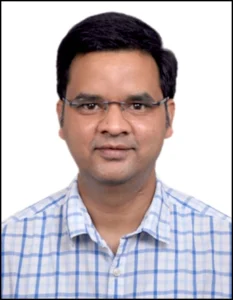
Dr. Sunil S. Kushvaha did his M.Sc. and M.Tech. from Banaras Hindu University and Indian Institute of Technology respectively. Then he moved to National University of Singapore to do his Ph.D. After successfully finishing his Ph.D. he joined as Research Scientist at Institute of Materials Research and Engineering, A*STAR to continue his research on thin film devices, Scanning Probe Microscopy/Spectroscopy. He returned to India in 2011 to join National Physical Laboratory in NewDelhi and since then he is working as Principal Scientist in NPL Delhi. Currently, he is working on Topological insulators and 2D materials; Semiconductor physics: III-nitrides wide band gap materials and his primary expertise is on Scanning probe microscopy: STM and AFM; Device fabrication: Photodetectors.
3.31st October 2022 (Monday) at 02:30 pm - 04:00 pm (IST), Venue: MS Teams
Title: Lanthanide based Phosphors for Smart Lightings
Dr. Sivakumar Vaidyanathan
Department of Chemistry,
Indian Institute of Technology Hyderabad
- Venue
- Read Abstract
- About the Speaker
Venue: MS Teams
Phosphor-converted white light-emitting diodes (pcLEDs) have attracted much attention in the past few decades owing to their several advantages, such as eco-friendliness, low power consumption, high efficiency, small volume, and long persistence. High performance and ultra-stable oxide based narrow band red emitting phosphors are still a bottleneck in white LED applications. Trivalent europium-based monochromatic red light-emitting phosphors are a vital component to recognize high-performance smart lighting devices; however, the concentration and thermal quenching restrict their usage. In this talk, various trivalent europium based red emitting phosphors with different crystal structure will be discussed with special emphasis on their optical properties as well as detail structure-compositions-property relationship will also be presented and discussed. Some of the red phosphors showed extremely high efficiency and good thermal stability. In addition, trivalent ion based molecular complexes also been investigated aiming to obtain high performance red emission or multiple emission (including white light emission) for solid state lighting applications. The detail results will be presented and discussed.
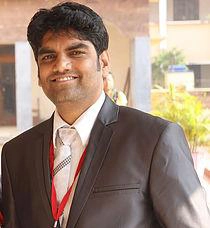
Dr. Sivakumar Vaidyanathan obtained his Bachelor and Master degree in chemistry from Muthurangam Govt Arts College - affiliated to University of Madras. After working for one and half years as a research fellow/synthetic chemist in the field of fuel cells/organic synthesis, Dr. Sivakumar moved to Indian Institute of Technology, Madras (IITM), to pursue doctoral studies. In 2007, he received his Doctoral degree under the supervision of Prof. U. V. Varadaraju. His doctoral thesis focused on Lanthanide luminescence in mixed Metal Oxides and Silicates After completing Ph.D. in 2007, he worked as a Brain Korea 21 Post-Doctoral Research fellow at the Korea Advanced Institute of Science and Technology, South Korea from April 2007 to March 2009 in the field of Molecular materials for display and lighting applications and then, from April 2009 to April 2010 worked in the Commissariat à l'Energie Atomique (CEA), Saclay, France in the field of OLEDs (Synthesis and optoelectronic properties of lanthanide containing Molecular complexes and Metallo polymers for organic or polymer light emitting diodes). His doctoral work was adjudged the best thesis in Inorganic/Analytical Chemistry for the year 2007 by IIT-Madras and awarded Prof. Alfred Werner medal. After spending a year in NIT Calicut as a Faculty in the Department of Chemistry, He was faculty at Department of Chemistry, National Institute of Technology Rourkela from Sep 2011 to Sep 2022. Currently he is associate professor at IIT Hyderabad and he has published >90 publication (reputed journals) and 5 book chapters. Guided PhD students – 8 Ongoing – 6 Projects – completed 5 ongoing 1 Many awards including BRNS, DST, Inspire young scientist award.
4.29th September 2022 (Thursday) at 02:30 pm - 04:00 pm, Venue: MS Teams
Title: Development and Demonstration of Advanced Nanostructured Materials for Energy Storage Applications
Dr. Srinivasan Anandan
International Advanced Research Centre for Powder Metallurgy and New Materials (ARCI),
Hyderabad, India.
- Venue
- Read Abstract
- About the Speaker
Venue: MS Teams
The first part of the presentation highlights the development of Li-ion battery (LIB) materials for Electric Vehicle (EVs) applications. Indigenous electrode materials technology and associated components that are essential for the manufacturing of Li-ion batteries within the country are the need of the hour. ARCI has developed an innovative and low-cost high energy milling process for the synthesis of in-situ carbon modified LFP for Lithium-ion batteries. In continuation with the effort to synthesize large quantities, 15-20 Kg C-LFP/batch has been successfully carried out in collaboration with Indian Powder Manufacturing Industry. The electrochemical performance of large-scale synthesized C-LFP exhibits a capacity of 1.75 Ah and 1.45Ah at the formation and 1C current rate respectively. An Indian patent and PCT application are filed related to this invention.1 Technology Know-how for the production of carbon-coated LiFePO4 has transferred to M/s. Allox Minerals Pvt Ltd., and the technology has successfully demonstrated. Further, ARCI developed a simple, economical scalable, and energy-efficient process for the production of LTO anode material with a performance at par with commercial LTO. Subsequently, LTO-based 1.5Ah 26650 cell as well as 0.45Ah Pouch cells have been fabricated and demonstrated. A large-scale demonstration of ARCI's developed LTO process has been initiated in collaboration with Industry. 15 kg batch of LTO has been synthesized and the resulting LTO delivers a superior rate capability of 145 mAh/g at 4C with good cyclic stability. The LTO innovation has been filed in National and worldwide.2 Patents which are filed in India, USA, Japan and China for this invention were granted recently. Efforts are in progress for technology transfer to a private company.
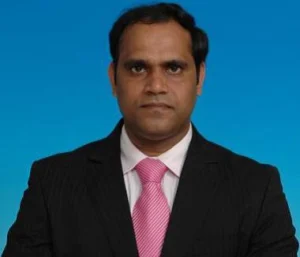
Dr. Srinivasan Anandan is a Senior Scientist at International Advanced Research Centre for Powder Metallurgy and New Materials (ARCI), Hyderabad, India. Dr. Anandan obtained his UG, PG and M.Phil degrees from Bharathidasan University, Trichy. He received his Ph.D. degree in Chemistry from Anna University, India in 2006. Then he served as a Post-Doctoral Research scientist (2006 - 2010) in National Institute of Materials Science (NIMS), Tsukuba, and in Kanagawa Institute of Technology (KAIT) and also in National Institute of Advanced Industrial Science & Technology (AIST), Tsukuba, Japan. He continued his work at AIST, then at Tokyo Institute of Technology (TITECH), Tokyo, as JSPS (Japan Society for Promotion of Science) Fellow (2011-2012). After that he joined in International Advanced Research Centre for Powder Metallurgy & New Materials (ARCI), Hyderabad, INDIA (June 2012). He has published more than 60 papers in Scopus indexed journals and 2 Book Chapters. He has 10 patents. He received a prestigious award “JSPS FELLOWSHIP” from Japan Society for Promotion of Science, Japan. He was awarded as “YOUNG SCIENTIST” in the Material Research Society of Japan at IUMRS-ICA 2008, Nagoya, Japan and “OUTSTANDING SCIENTIST AWARD” for his contribution and achievement in the field of Nanomaterials during 3rd Annual Research Meet held at Chennai on 11th November 2017. He received many Best Oral/poster Presentation Awards in many national/International Conferences (Super Capacitors and Energy Storage Applications (ICSEA-2019)' held at Thrissur, Kerala during March 08 – 09 (2019), “Battery Technologies & Electric Mobility” at HP Green R & D Centre, Bangalore on March 8-9 (2018), INDIA NANO 2017 held during 7-8th December 2017 in Bangalore with the Cash Prize of Rs.20,000, etc.) He a Member of American Chemical Society, and Material Research Society of Japan. He also acts as a reviewer for international referred journals like ACS, RSC and Elsevier. His fields of research are material development for Energy storage technologies (Li-ion battery, Supercapacitor, & Li-ion capacitor), development of UV and visible-light driven photocatalysts for Self-cleaning application, and development of large-scale process for the synthesis of Nanomaterials
5.30th August 2022 (Tuesday) at 02:30 pm - 04:00 pm, Venue: MS Teams
Title: Engineering Structure and Functionality at Molecular Resolutions Towards High-Performance Affinity Biosensors
Dr. Sivashankar Krishnamoorthy
Nano-Engineered Biodevices Group,
Materials Research and Technology Department,
Luxembourg Institute of Science and Technology (LIST)
- Venue
- Read Abstract
- About the Speaker
Venue: MS Teams
The ability to detect and profile molecular biomarkers (molecules that signify the health status of an individual), with ultrahigh sensitivity, quick response times, and within desired form factors are increasingly sought to meet the emerging healthcare demands. This requires going well beyond the capabilities of the current sensors, in directions that would require making fundamental advances in the design of the sensing interfaces. In this direction, I will present our recent advances in engineering the sensor interface properties at molecular length scale as means to delivering multiple advantages, including the high sensitivity of nanoscale transducers, enhanced analyte mass transport and analyte capture efficiency, ultralow sample volumes and miniatured sensor footprints.
The talk would also delve into the means of address the challenge of creating and engineering sensor interfaces down to the scale of few nanometers, reliably and reproducibly across large areas. I will provide particular attention to plasmon-enhanced spectroscopic sensors, consisting of sub-10nm metal gaps that can concentrate and enhance electromagnetic (EM) fields by several orders of magnitude. Leveraging the highly enhanced EM fields at the gaps (also referred to as gap hotspots) would provide opportunity for ultra-low detection limits in Raman and Fluorescence spectroscopic detection of bioanalytes. Our work will show how these gap hotspots can be engineered to maximize both light-matter interactions as well as biomolecular interactions at the gaps, to draw the best leverage for the analytes over the ensuing EM enhancements at the gap hotspots.
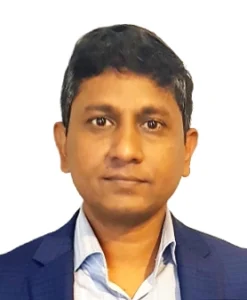 Dr. Sivashankar Krishnamoorthy
Nano-Engineered Biodevices Group,
Materials Research and Technology Department,
Luxembourg Institute of Science and Technology (LIST)
Dr. Sivashankar Krishnamoorthy
Nano-Engineered Biodevices Group,
Materials Research and Technology Department,
Luxembourg Institute of Science and Technology (LIST) 6.29th July 2022 (Friday) at 10:30 am - 11:30 am, Venue: MS Teams
Title: Toward high efficiency Intermediate band solar cells: Materials and current issues
Dr. Nazmul Ahsan
Project Associate Professor,
RCAST, The University of Tokyo,
Tokyo
- Venue
- Read Abstract
- About the Speaker
Venue: MS Teams
New semiconductor materials and new quantum nanostructures are exploited in order to achieve high-efficiency photovoltaic solar energy conversion reaching 50% under concentrated sunlight and innovation on alternative energy technologies. The present talk addresses, Intermediate band solar cells with photocurrent enhancement by two-step infrared photon absorption using quantum dot arrays or highly mismatched semiconductor alloys, Multi-junction solar cells with improved spectral matching for sunlight by stacked semiconductor junctions and hot carrier solar cells with high output voltage by hot carrier extraction.
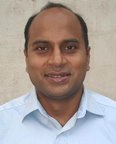 Prof. Nazmul Ahsan
Prof. Nazmul Ahsan
Prof. Nazmul Ahsan received his Ph.D. in electronic engineering from The University of Tokyo in 2002. He is currently a Project Associate Professor at the RCAST, The University of Tokyo. His research interests include high-efficiency photovoltaic devices, molecular beam epitaxy of compound semiconductors and 2D chalcogenides, materials and device characterization, computation and machine learning as applied to materials science. He has published nearly 100 journal articles with over 2000 citations.
7.29th June 2022 (Wednesday) at 4:00 pm - 5:00 pm, Venue: MS Teams
Title: Nanostructured Films for Photoelectrochemical Water Splitting
Dr. Ajay Kumar Kushwaha
Department of Metallurgy Engineering and Materials Science (MEMS),
Center for Advanced Electronics (CAE),
Center of Futuristic Defense and Space Technology (CFDST),
Indian Institute of Technology Indore, Khandwa Road, Simrol, Indore-453552, India
- Venue
- Read Abstract
- About the Speaker
Venue: MS Teams
Hydrogen as fuel is gaining popularity due to its environmentally friendly nature and high energy per mass. Therefore, cleaner hydrogen production has become an important area of research in which solar driven water splitting has shown excellent potential. However, the design and synthesis of suitable materials for solar driven water splitting is still challenging and numerous efforts are going on worldwide. Herein, we discuss these issues with some possible steps to develop a highly efficient materials. The role of nanorod based photoelectrodes is very crucial for designing a better performing material. However, limitations in harvesting the wider spectrum of solar every is hindering the performance of the metal oxide nanorod based photoanode. The surface modification of these nanorod can further improve the light harvesting capability leading to better performance in solar driven water splitting.
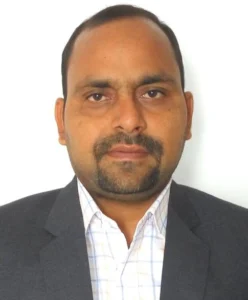 Dr. Ajay Kumar Kushwaha
Dr. Ajay Kumar Kushwaha
Dr. Kushwaha is Assistant Professor in Department of Metallurgy Engineering & Materials Science, IIT Indore. He is also associated faculty in Center for Advanced Electronics (CAE) and Center of Futuristic Defense and Space Technology (CFDST), IIT Indore. He received M.Sc. degree in Physics (Electronics) from C.S.J.M. University, Kanpur and Ph.D. degree in Physics (Nanomaterials) from IIT Bombay. He was scientist at Institute of Materials Research and Engineering, A*STAR, Singapore during Feb 2014 to July 2016. After That he joined IIT Indore in 2016. He is the recipient of DST-INSPIRE Faculty Award (2016) and SERB-Early Career Research Award (2017) from Government of India. Dr. Kushwaha is life-member of, MRSI, IIM, IPA, EMSI & LSI and member of the Royal Society of Chemistry. Dr. Kushwaha is leading the research group ‘Nano & Energy Materials' at IIT Indore. The group is working on the synthesis of various functional nanomaterials and the investigation of fundamental properties of nanoscale materials/devices. The group is motivated to develop low cost, large scale, and facile materials for electronics & electrochemical devices namely artificial synapses, memristors, energy harvesting/storage devices, electrochemical sensors, and metal recovery & anti-corrosion coatings.
8.25th May 2022 (Wednesday) at 5:00 pm - 6:00 pm, Venue: MS Teams
Title: A Century of Spin: The Centennial of the Stern-Gerlach Experiment
Prof. Nicholas Hermon
Department of Physics, Coastal Carolina University.
- Venue
- Read Abstract
- About the Speaker
Venue: MS Teams
In this talk I will give a brief historical overview of the discovery of spin in 1922 and explore some of the early debates surrounding the Stern-Gerlach effect on electrons. I will then discuss how the Stern-Gerlach effect can be observed in solid state systems to produce spin and charge currents. Lastly, I will explore how defect spins are attractive candidates for quantum sensing applications.
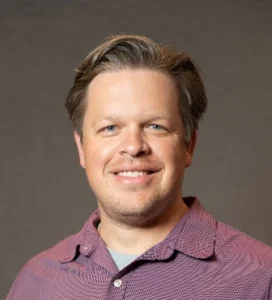 Dr. Harmon
Dr. Harmon
Dr. Harmon received his PhD in Physics from The Ohio State University in 2010. Dr. Harmon spent several years at the University of Iowa as a post-doc and research scientist in theoretical condensed matter physics before. Dr. Harmon spent three years at the University of Evansville before joining the faculty of Coastal Carolina University in the Fall of 2021. Dr. Harmon's research focuses on utilization of electron spin for a variety of applications: new magnetic memories, new methods of defect identification in electronic devices, and using paramagnetic defects for quantum sensing of magnetic and electric fields.
9.29th April 2022 (Friday) at 11:30 am - 12:30 pm, Venue: MS Teams
Title: Importance of Precise Measurements in Advanced Science and Technology
Dr. N Vijayan
Principal Scientist & Associate Professor, National Physical Laboratory (NPL), New Delhi
- Venue
- Read Abstract
- About the Speaker
Venue: MS Teams
Accurate and precise measurements are very important for research and manufacturing sectors. It may be noted that India faces a huge problem due to poor quality import on one hand, and rejection of our export at foreign borders on the other hand, causing a huge economic loss to the country. The main reason for this is the non-availability of reasonably priced CRMs to the various test labs. It may be please noted that India has nearly 4 lakhs testing laboratory dealing with the quality control of in-house material/products/services and import/export business. In many cases, in order to export the Indian product, the testing is done in foreign country, which not only is expensive but also taking away our jobs related quality control and testing. Therefore, in-house production of the BNDs/CRMs is essential for import/export as well as the job creation (as the BND production will require a huge manpower and also for their distribution and marketing). CSIR-NPL is actively working for the development of various Indian reference Materials (BNDs) in different sectors of our day to day life. The detailed information's will be given during the presentation.
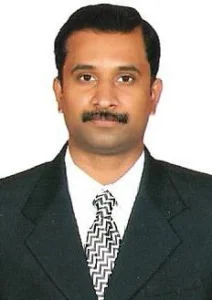 Dr. N Vijayan
Dr. N Vijayan
Dr N Vijayan is Principle scientist and associate professor at the CSIR lab National Physical Laboratory NPL. Dr Vijayan did most of his education from Bharathidasan University, Thiruchirapalli and his doctorate from Anna University Chennai. Dr Vijayan joined the NPL as Junior scientist in 2004. With his outstanding performance in research he was gradually promoted to various cadres and is now the Principal Scientist and Group Head of the In-House Bharathiya Nirdeshak Draya (BND) group of the BND division. His current research interests are: Growth of Nonlinear and Piezoelectric single crystals by VBT and Solution growth techniques; Preparation of Si Powder as a Indian Reference Material (BND) for the calibration of Powder X-ray Diffractometer; Preparation of Nanomaterials by Microwave and autoclave methods Characterization of Materials by different sophisticated techniques. He was selected for Raman Research Fellowship 2020, has played a key role in achieving outstanding performance award for BND group 2018, Dr Gunasekaran award for Spectroscopy in 2018, outstanding researcher and scholar icon 2017, Beat Innovate Researcher award in 2015, Bharat excellence award in 2014, BOYSCAST fellowship by DST in 2007-2008, CSIR Young Scientist for 2007 and the list goes on and on. Dr Vijayan have nearly 400 publication to his credit which include peer reviewed international and national journal publication, conference publications, books and book chapters. Dr Vijayan also have a Spanish patent on Semiconductor mono-crystal growth system by variable growth speed. Dr Vijayan is also an active member of several scientific societies such as National academy of sciences, fellow of academy of sciences, Chennai, Indian Laser Association (ILA), Indian Association of Crystal Growth.
10.30th March 2022 (Wednesday) at 4:00 - 5:30 pm (Prague, Czechia Standard Time, Wednesday, 11:30 am), Venue: MS Teams
Title: Transparent ceramics for high energy lasers
Dr. Samuel Paul David
Senior Researcher, Director, HiLASE Center, Institute of Physics Czech Academy of Sciences The Czech Republic
- Venue
- Read Abstract
- About the Speaker
Venue: MS Teams
Recently, a series of world records on laser output power was achieved in a diode-pumped solid-state laser system termed as “BIVOJ”. With pulse energy of 146.5 J at a repetition rate of 10 Hz in nanosecond duration, this multi-slab laser demonstrated a record of an average power of ~1.5 kW at 1030 nm. Converting such high-energy laser pulses into its second harmonic wavelength, the team also achieved another world record laser average power at 515 nm. The achievement was demonstrated at HiLASE Centre, Institute of Physics of The Czech Academy of Sciences by a team of researchers in collaboration with Science and Technology Facilities Council (STFC), UK. One of the key factors behind this laser is the use of transparent ceramics as a gain media. Compared to crystalline and glass gain media for lasers, transparent ceramics offer unique advantages in terms of manufacture and performance. The talk will briefly be about this new world record and the role of transparent ceramics in such lasers. In the talk, the fabrication techniques and challenges behind transparent ceramics will also be discussed.
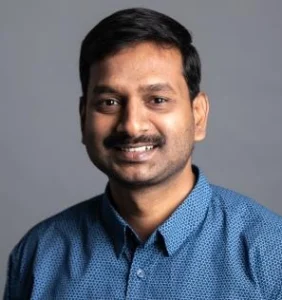 Dr. Samuel Paul David
Dr. Samuel Paul David
Dr. Samuel is currently working a Senior Research at HiLASE Center, Institute of Physics, Czech Academy of Sciences, The Czech Republic. Dr. Samuel obtained his under and post-graduation from The American College, Madurai, India. He earned his Ph.D. degree in High temperature crystal growth of laser materials from Crystal Growth Centre, Anna University, India. He did his part of research work at University of Electro Communications, Japan under Japanese Govt fellowship. After his Ph.D. he joined as a Post-Doctoral Research Associate at CREOL, University of Central Florida, USA. He was a visiting researcher of Universitat Rovira i Virgili, Spain. He also served as Assistant Professor of Physics in Crescent University and in RAMCO Institute of Technology, India. He has published more than 25 paper in highly reputed journals and 8 Book Chapters in International Publishers. He got several awards such as Monbugagakusho fellowship (Japanese Government), Einstein Award for proficiency in Physics, M.A. Thangaraj Award for the best student during his graduation and outstanding Reviewer. He act as an Editorial Board Member for Non-Metallic Material Science Journal.
11.3rd February 2022 (Thursday) at 14.15 to 15.15 (IST), Venue: MS Teams
Title: Permanent magnets a challenge of size, shape, and orientation
Prof. Mogens Christensen
Professor, Centre for Integrated Materials Research (iMAT),Department of Chemistry & iNANO, Aarhus University, Denmark
- Venue
- Read Abstract
- About the Speaker
Venue: MS Teams
Magnetic materials are omnipresent in our daily life's, ranging from electromotors and generators converting between kinetic energy and electricity to hard drive data storage. Magnetism is a quantum mechanical phenomenon related to the number of unpaired electrons on the atomic level. Understanding and controlling structures from the atomic via the nanoscale to the microscopic level allows the design and building of better performing magnetic materials. Synchrotron light is essential for investigating the compaction and alignment of permanent magnetic material on a sub-second time scale. Neutron scattering on the other hand is essential for obtaining information about the atomic dipolar magnetic moment on the atomic level. The obtained information will be utilized to improve the processes and enhance the performance of magnetic materials.
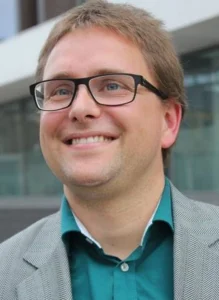
Prof. Mogens Christensen Education:
- 2006: Ph.D. (chemistry), Dept. of Chemistry, University of Aarhus (received 13.10.06).
- 2003: M.Sc. (materials physics and chemistry), Dept. of Chemistry, University of Aarhus.
- 2000: B.Sc. (physics and chemistry), University of Aarhus.
- 2021- Professor, Aarhus University, Denmark
- 2014-2021 Associate Professor, Aarhus University, Denmark
- 2010-2014 Assistant Professor, Aarhus University, Denmark
- 2008-2010: Post doc. at Aarhus University, Denmark (15 months)
- 2007-2008: Post doc. at Bragg Institute, ANSTO, Sydney, Australia (18 months)
- 2005: Visiting researcher at the Stucky Group at UCSB, California, US. (3 months)
- 2004: Assistant Researcher at SNBL, ESRF, Grenoble, France (12 months)
- 2002: Visiting researcher at Max-Planck Institute, Dresden, Germany (1½ months)
- 2000-2001: Followed two semesters of courses at the ETH Zürich, Switzerland. (12 months)
12.31st January 2022 (Monday) at 11:00 am - 12:00 pm (IST), Venue: MS Teams
Title: Development of high-functional multiferroic thin films and their device application
Prof. Satoru Yoshimura
Professor& Director, Research Center of Advanced Materials for Breakthrough Technology, Graduate School of Engineering Science, AKITA UNIVERSITY, JAPAN
- Venue
- Read Abstract
- About the Speaker
Venue: MS Teams
Magnetic reversal method using an electric field is a future technology for high performance magnetic devices with lower power consumption. Multiferroic (ferromagnetic and ferroelectricity) materials with magneto-electric effect have been receiving greater attention for this method. Ba, La, or Co doped BiFeO3 (BiFeO3 is typical material with antiferromagnetic and ferroelectricity) were reported as multiferrioc material with clear ferromagnetic hysteresis. Although the excellent magnetic properties such as high saturation magnetization, perpendicular magnetic anisotropy, and large magnetic Kerr effect are needed to realize the high performance magnetic devices, the magnetic properties of those BiFeO3-based thin films are not sufficient for application to that magnetic devices. To realize those magnetic properties, substitution of various Lanthanoids against Bi and/or various concentration of Co against Fe in BiFeO3 were investigated in this study. (Bi0.5Nd0.5)(Fe0.75Co0.25)O3 film had a very high saturation magnetization of 140 emu/cm3 with perpendicular magnetic anisotropy. (Bi0.5La0.5)(Fe0.75Co0.25)O3 film had a very high magnetic Kerr rotation angle of 0.72o with perpendicular magnetic anisotropy. In (Bi0.5La0.5)(Fe0.75Co0.25)O3 film, magnetic domain with several hundred nano-meter size was generated by applying local electric field without applying magnetic field. These indicate that the multiferroic films are expected to be useful for electric-field-driven magnetic devices.
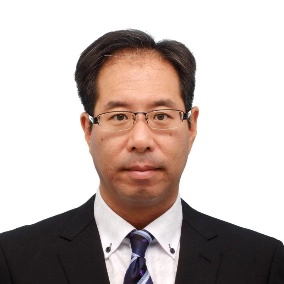 Prof. Satoru Yoshimura
Prof. Satoru Yoshimura
Prof. Satoru Yoshimura did his bachalor's and master's in Electronic Engineering from TOHOKU UNIVERSITY, JAPAN. He did his Ph.D in the field of Magnetic thin films (recording media) in the year 2002. Prof. Satoru Yoshimura has started his career as a research fellow and research associate till 2007. In 2007 he joined department of electronics Kyushu University as assistant professor. In 2008 he joined the Centre for Geo-environmental sciences as associate professor. At present he is the Director, Research Center of Advanced Materials for Breakthrough Technology. Prof. Yoshimura has also worked at various prestigious institutions as guest researcher and adjunct professor capacity. He has published nearly 100 research articles in peer reviewed international journals. There are 22 patents to his credit and many awards too.
2021
1.29th January 2021 (Friday) at 3:00 PM (IST), Venue: MS Teams
Topic: Science and Technology of Advanced Functional and Quantum Materials
Prof. M.S. Ramachandra Rao
- Read Abstract
- About the Speaker
Twentieth century has witnessed a new era of modern physics with the evolution of a plethora of experimental techniques that include understanding of optical and x-ray spectra, Rutherford scattering, Stern-Gerlach experiment that led to the discovery of electron spin, with simultaneous progress in the fields of superconductivity, magnetism, spintronics, crystallography and the physics of low dimensional. We know that matter is made up of atoms, atoms make up crystal lattices and electronic correlations play an important role in determining the physical properties of materials. Our group focusses on the fundamental and application aspects of advanced materials, Quantum materials, thin films, heterostructures/nanostructures and surface coatings for many technological applications. I will start with a basic introduction to thin film growth of advanced materials for large scale production of surface coatings for industrial applications. I will talk about the growth of large area piezo-materials for defence applications. I will also talk about the on going industry collaboration where we use diamond coatings for useful enhancement in mechanical properties of machine tools. Diamond coatings have a plethora of applications including defence, space and bio-medical industries.
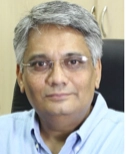
Prof. M.S. Ramachandra Rao obtained his Ph. D from Department of Physics, IIT Kharagpur in 1988. Prof. Rao held various positions before IITM and still hold many of them. Few of which are - as a research scientist at CNRS, France, then as visiting fellow at TIFR Bombay, JSPS fellow and as visiting faculty at University of Maryland, USA, SIT, Tokyo. He has established Nano functional Materials Technology Centre (NFMTC) and DST-funded Solar Energy Harnessing Centre (DSEHC) at IITM. He was one of the pioneers of IITM Research Park and have successfully incubated a company. There are 15 patents and 4 technology transfers to his credit. He has published more than 265 articles in the peer reviewed international journals, completed 20 funded projects and presently hold 6 ongoing projects. There are numerus awards to his credit.
2. 24th February 2021 (Wednesday) at 11:00 am - 12:00 pm, Venue: MS Teams
Topic: Recent Advances in Nanotechnology for Energy, Environment and Health
Prof. Subramanian Tamil Selvan
Lee Kong Chian School of Medicine, Nanyang Technological University, 59 Nanyang Drive, Singapore 636921
Alpha Biomedical Pte Ltd, 29 Tai Seng Avenue, Natural Cool Lifestyle Hub, 534119, Singapore
- Venue
- Read Abstract
- About the Speaker
Nanotechnology is an emerging paradigm for a variety of applications ranging from energy, environment to biomedical health sciences. Nanomaterials play a vital role in dictating exotic properties required for the aforementioned applications. Nanoparticles (NPs) endowing optical (surface plasmon resonance, e.g. Au NP; fluorescence, e.g. quantum dots, upconversion NP), magnetic (e.g. iron oxide NP), and mechanical (e.g. composites such as graphene and carbon nanotubes) properties are useful for designing chemical/ electrochemical sensors for environment (e.g. food safety, pollutants removal), electrodes in energy (batteries, solar cells), and biosensors or drug carriers in biomedical sector.
This talk would focus on these three important areas, but mainly focus on our recent efforts in the synthesis of multifunctional NPs, and their potentials for cancer bio-sensing, bio-imaging and therapeutic applications. Future prospects of nanomedicine in neurodegenerative diseases (e.g. Alzheimer, Parkinson) will also be discussed.
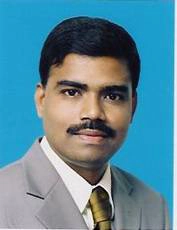
Prof. Subramanian Tamil Selvan Ph.D., Chemistry in 1992 from CECRI Karaikudi, India. He has worked in the areas like Electrochemistry of Nickel-Cadmium Battery during his graduate studies. Further, he was a Humboldt Fellow, University of Ulm, Germany, JSPS Fellow, Nagoya Institute of Technology, Japan. Then worked as a Research Fellow at School of Chemistry, University of Melbourne, Australia (2002).
Since then, he worked as Principal Research Scientist in Agency for Science, Technology and Research in Singapore and He was also an Adjunct professor in Department Biomedical Engineering, National University of Singapore. Currently, he is working as a Senior Fellow (LKC School of Medicine, Nanyang Technological University, Singapore) and he is also Director/ Chief Scientist, Alpha Biomedical Pte Ltd; Advisor, Bronx Holding, Singapore.
Dr. Tamil Selvan's current research areas include Nanomaterials for cancer and neurodegenerative applications, Nanomaterials for cancer and neurodegenerative applications.3. 31st March 2021 (Wednesday) at 2:00 PM to 3.30 PM, Venue: MS Teams
Title: Metal -Semiconductor interfaces for Beyond Moore applications
Prof. Tamalika Banerjee
University of Groningen, Zernike Institute for Advanced Materials, 9747 AG Groningen, The Netherlands
- Venue
- Read Abstract
- About the Speaker
The metal/semiconductor interface is a canonical interface crucial to the development of spintronics. After a brief introduction to the key phenomena in spintronics, I will discuss charge and spin transport across such interfaces using an unconventional semiconductor. Remarkably, we find applications for such devices in new computing strategies. Computing inspired by the human brain requires a massive parallel architecture of low-power consuming elements of which the internal state can be changed. Non-volatile memory devices such as memristors, based on Schottky contacts on Nb-doped SrTiO3 as memristive elements will be discussed. Our findings are of relevance for beyond Moore applications, where a simultaneous integration of memory and logic functionalities in the same device is a prerequisite.
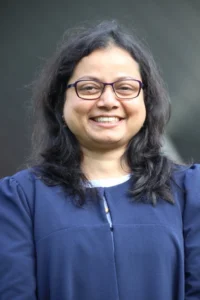
Prof. Tamalika Banerjee is a Rosalind Franklin Fellow and a Full Professor of 'Spintronics of Functional Materials' in the Physics of Nanodevices group at the Zernike Institute for Advanced Materials. She is also a Scientific Associate Investigator, FLEET, ARC Centre of Excellence in Future Low-Energy Electronics Technologies, Australia. She is a Senior member of IEEE She studied Physics at Presidency University, Kolkata, India and obtained her PhD from the University of Madras, India. She was a Visiting Scientist at the Francis Bitter Magnet Laboratory, MIT, USA and a PostDoctoral Fellow at the Tata Institute of Fundamental Research, Mumbai, India, before she joined the MESA+Institute for Nanotechnology at the University of Twente, the Netherlands. In 2009, she moved to the University of Groningen and since spring 2019, is a Full Professor at the Zernike Institute for Advanced Materials. Her research group on ‘Spintronics of Functional Materials' studies spin transport in functional material interfaces involving complex-oxides and their integration with graphene and topological insulators, relevant for spin logic and reconfigurable spintronics architecture. Her current research focus is on Topological spintronics, with particular focus on studying strong correlation effects and topology in such quantum materials. A primary focus is on looking at new approaches to study spin and magnon transport by electrical field control, particularly relevant for reconfigurable spintronics architecture and for applications in neuromorphic computing. Earlier, she pioneered a new technique, known as the Ballistic Electron Emission microscopy, to study spintronic devices at the nanometer scale which has been applied to different material systems and their devices. She has edited a book on 'Oxide Spintronics' ‘Oxide interfaces- Charge and spin transport- Fundamentals and applications' and has published in several peer reviewed journals on topics from ion iradiation effects to oxide spintronics which is her present field of interest. Her research is funded by NWO-VIDI, NWO-nano (FOM), NWO-DST and Dieptestrategie grants. She is a member of the Steering group of NanolabNL and of the NWO Domain Science working group on Physics for Technology and Instrumentation.
4. 30th April 2021 (Friday) at 02:00 pm - 03:30 pm, Venue: MS Teams
Title: Exploring spin and lattice dynamics in laser excited solids
Dr. Sakshath Sadashivaiah
Senior Scientist, (TENURE TRACK), Helmholtz Institute Jena, Germany, AG X-ray Physics
- Venue
- Read Abstract
- About the Speaker
Venue: MS Teams
Physical phenomena occur at various rates corresponding to the energetics fundamental interactions involved. New insights into the mechanisms of the phenomena can be obtained by probing them at appropriate time scales. Femtosecond laser pulses can serve both to excite as well as to probe ultrafast phenomena in various materials. Such investigations have led exciting discoveries such as light-induced superconductivity, ultrafast magnetic memories and laser micro-machining.
Time-resolved magneto-optical Kerr effect in exemplary magnetic thin films reveals the effect of parameters such as exchange interactions, spin currents and spin scattering on ultrafast magnetization dynamics. In Au/Ni bilayers, Au is found to be ferromagnetic in the laser excited transient state due to spin currents [1]. In NiFe films, we detect for the first time an optically excited inter-site spin transfer between the constituent elements [2]. However, although the lattice is understood to be the sink of angular momentum in laser excited demagnetization, an experimental measurement of the dynamics of pure phonon modes is missing. Further applications such as laser micro-machining benefit from an understanding of the evolution of thermal properties immediately after laser excitation. The lack of such studies is partly because optical selection rules impose limitations to the phonon modes that can be accessed using radiation from UV to IR wavelengths. Nuclear resonant scattering (NRS), based on the Mössbauer effect of gamma rays, is not bound by these rules and provides the full phonon density of states with element specificity. As a first step, we have developed NRS-based pump-probe spectroscopy to study the phonon modes in laser excited spin crossover complexes [3]. Additionally density functional theory enables us to identify the exact vibrational modes that stabilize the laser-excited high spin state. We have extended it further with picosecond resolution to investigate metallic foils and magneto-caloric thin films.
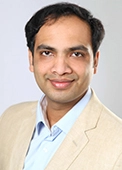
Dr. Sakshath Sadashivaiah Technische Universität Kaiserslautern, Germany and studied Ultrafast phenomena on surfaces. Here is also got a Carl-Zeiss Fellowship. Further continued working in the Biophysics and Medical Physics group and started working in designing time resolved Nuclear resonance scattering experiment. Currently, Dr. Sakshath is a Senior Scientist Helmholtz Institute Jena, Germany and works in the research area of ultra-fast phenomena in X-ray Physics group.
AWARDS AND RECOGNITION Best oral presentation: International conference on the applications of Mössbauer effect (2017). Fellowship of the Carl-Zeiss foundation for research (2013 – 2015). Joint UGC-CSIR Lectureship (NET) (2006). Bondade memorial physics lecture prize (2005). National top 1%: National physics examination for class 12 students conducted by IAPT (2000). Referee of scientific journals. SCIENTIFIC COMMUNICATIONS 20 Publications in international journals and conferences 10 Invited talks 9 Contributed talks in international conferences. 15 poster presentations5. 26th May 2021 (Wednesday) at 02:00 pm - 03:00 pm, Venue: MS Teams
Title: Giant magnetoimpedance and current-driven magnetic resonance in perovskite oxides
Prof. R. Mahendiran
Science Drive, Department of Physics, Faculty of Science, National University of Singapore, Singapore
- Venue
- Read Abstract
- About the Speaker
Venue: MS Teams
Colossal magnetoresistance (CMR) discovered nearly three decades ago in Mn-perovkites (hole-doped LaMnO3) triggered a flurry of activity in search of similar phenomenon in other oxides. However, majority of available reports deal with the magnetoresistance measured using a direct current or low-frequency current "(f < 1kHz)". While ac impedance in the frequency range 100 Hz to a few MHz range is often used to study dielectric relaxation and magnetocapacitance effect in insulating oxides, ac impedance in metallic oxides is seldom reported. Recent experimental work on the ac magnetoimpedance in the frequency range from ~1kHz to 3 GHz done in our lab has revealed many exciting phenomena: colossal magnetoresistance at low fields (~ 40-90 % for H ≤ 1 kOe at room temperature), transition from negative to positive magnetoresistance, and more excitingly current-driven electron spin resonance/ferromagnetic resonance. Electrical detection of magnetic resonance which we observed has the potential of being used as a probe to investigate spin dynamics in other magnetic systems. First, I will give overview of the field, then present results derived from hole-doped RMnO3, double perovskites(Sr2FeMoO6, La2NiMnO6), insulating garnets (YIG) and paramagnetic DPPH molecule. At the end, I will give overview related phenomena being explored in spintronics devices using spin-transfer and spin-orbit torque ferromagnetic resonance techniques and discuss current challenges.
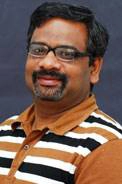
Prof. R. Mahendiran received PhD in physics from Indian Institute of Science in 1997. He was awarded with Tholouse Medal for the best thesis by IISc in recognition of his original contributions to the emerging field of colossal magnetoresistance in oxides. He joined the National University of Singapore (NUS) in year 2005 as an assistant professor and promoted to associate professor in 2012. Prior to joining NUS, he worked as a post doctoral fellow/senior researcher at several places: University of Zaragoza, Zaragoza, Spain (1997-1999), Laboratoire CRISIMAT, Caen, France (1999-2001), Pennsylvania State University , State College, USA (2001-2003), ERATO Researcher at AIST, Tsukuba, Japan (2003 to 2005). He has published 170 papers in peer reviewed journals, received more than 5200 citations (source: ISI web of knowledge) and has an H-index of 37. He was awarded NUS-Young Investigator Award in 2007 and served as the co-chairman of spintronics group at NUSNII, NUS. He is a member of Spintronics Consortium, Singapore. He is interested in magnetic oxides and alloys. His current research focus on radio and microwave magnetotransport in oxide/metal interfaces, resistive non-volatile memory, multiferroics, spin related thermoelectric effects, giant magnetocaloric and magnetostrictive materials. He has given over 50 invited talks and presentations in international conferences.
6. 30th June 2021 (Wednesday) at 02:00 pm - 03:00 pm, Venue: MS Teams
Title: Plasma Engineering of Materials for wastewater treatment
Prof. Satheesh Krishnamurthy
Professor and Chair, Energy Technology, The Open University, UK
- Venue
- Read Abstract
- About the Speaker
Venue: MS Teams
Plasma, the fourth state of matter, has captivated humans for millennia. In the past several decades, exciting breakthroughs in the use of plasma processes and usage of industry in a diverse range of nanomaterials, nanoengineered coatings and interfaces. Examples not only limited to include nanowires, nanotubes, nanoparticles, and nanostructured coatings for applications in numerous areas of everyday life, ranging from medical devices to electronics. Furthermore, many of these materials, coatings and interfaces are unique and cannot be derived by “conventional” means. In this work we present atmospheric plasma functionalisation of 2D materials such as Graphene, Molybdenum Sulphide, metal nanowires to organic molecules to tailor the electronic, optical and electrical properties to be used as Energy storage, wastewater treatment and also in perovskite solar cells. We also present new ways of utilising atmospheric pressure plasma for wide variety of applications.
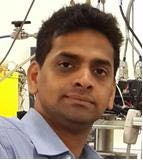 Prof. Satheesh Krishnamurthy
Prof. Satheesh Krishnamurthy
Professor Satheesh Krishnamurthy has over 20 years of research experience in energy within academia and industry. He specialises in the laser and plasma processing of renewable energy materials and chemical vapour deposition of semiconductor nanomaterials. His research is widely published with over 70 publications in scientific journals, and book chapters, some with an impact factor of 8 to 35, and over 8,000 citations. He is committed to the practical application and sustainability of research through the commercialisation of renewable energy technologies and strengthening the capacity of academics and entrepreneurs in developing countries. Professor Krishnamurthy has successfully assembled, led and managed many multi-disciplinary, multi-country research collaborations between UK/Irish and Southern hemisphere academic, NGO and private sector partners to address the intractable global challenge of access to clean, reliable and affordable energy.
7. 29th July 2021 (Thursday) at 03:00 pm - 03:00 pm, Venue: MS Teams
Title: Functional Materials for High performance Near UV/Deep blue Organic Light Emitting Diodes (OLEDs)
Prof. Sivakumar Vaidyanathan
Department of Chemistry, National Institute of Technology, Rourkela, Odisha
- Venue
- Read Abstract
- About the Speaker
Venue: MS Teams
Organic light-emitting diodes (OLEDs) are the attractive prospect for the development of next generation full color, flat panel displays and lighting technologies, due to their attractive features including wide viewing angle, superior color quality, fascinating flexibility, etc. The development of efficient blue emitters is of great significance in OLED applications as full-color displays and energy-saving lightings. However, the available efficient blue emitters are limited because of their wide bandgap, poor carrier charge balance, and low efficiency in the solid state. Recent OLED material development has focused on the design, synthesis and application of high efficiency and long-life blue emitters. The electro-fluorescence using triplet energy for radiation has become a spotlight in the area of organic electronics recently. Various triplet-to-singlet conversion mechanisms have been established, including triplet-triplet annihilation (TTA), thermally activated delayed fluorescence (TADF), “hot exciton” model with hybridized local and charge-transfer (HLCT) excited state and they are expected to shed light on the development on blue OLEDs. However, our main focus on designing and synthesis of efficient near UV/deep blue light emitting materials by TADF and HLCT mechanism to realized high performance deep-blue emitting materials for organic light emitting diodes (OLEDs) satisfying the color purity criteria given by the National Television System Committee (NTSC)) (CIE: 0.14, 0.08) and European Broadcasting Union (EBU) (CIE: 0.15, 0.06). The importance of design strategy, dark triplet exciton harvesting channel and their impact on EQE and CIE color coordinates are given below.

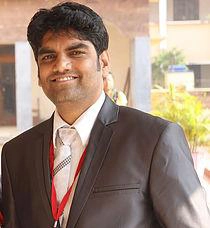
Dr. Sivakumar Vaidyanathan obtained his Bachelor and Master degree in chemistry from Muthurangam Govt Arts College - affiliated to University of Madras. After working for one and half years as a research fellow/synthetic chemist in the field of fuel cells/organic synthesis, Dr. Sivakumar moved to Indian Institute of Technology, Madras (IITM), to pursue doctoral studies. In 2007, he received his Doctoral degree under the supervision of Prof. U. V. Varadaraju. His doctoral thesis focused on Lanthanide luminescence in mixed Metal Oxides and Silicates.
After completing Ph.D. in 2007, he worked as a Brain Korea 21 Post Doctoral Research fellow at the Korea Advanced Institute of Science and Technology, South Korea from April 2007 to March 2009 in the field of Molecular materials for display and lighting applications and then, from April 2009 to April 2010 worked in the Commissariat à l'Energie Atomique (CEA), Saclay, France in the field of OLEDs (Synthesis and optoelectronic properties of lanthanide containing Molecular complexes and Metallo polymers for organic or polymer light emitting diodes). His doctoral work was adjudged the best thesis in Inorganic/Analytical Chemistry for the year 2007 by IIT-Madras and awarded Prof. Alfred Werner medal. After spending a year in NIT Calicut as a Faculty in the Department of Chemistry, He has moved to Department of Chemistry, National Institute of Technology Rourkela. Currently he is associate professor and he has published >75 publication (reputed journals) and 5 book chapters.
Guided PhD students – 6 Ongoing – 6 Projects – completed 4 ongoing 1 Many awards including BRNS, DST, Inspire young scientist award.8. 17th August 2021 (Tuesday) at 11:00 AM Mumbai, Kolkata, New Delhi, Venue: MS Teams
Title: Heusler alloy thin films for Spintronics applications
Prof. Srinath S
Department of Physics, University of Hyderabad
- Venue
- Read Abstract
- About the Speaker
Venue: MS Teams
In Spintronic devices, the spin of the electron is used as an additional degree of freedom in contrast to common electronic devices where charge of the electron is responsible for transport. Spintronic devices have attracted a lot of attention in recent years due to possible new applications, such as magnetic random-access memory (MRAM). The Nobel Prize in Physics 2007 for the discovery of the GMR effect is the recognition of spintronics as a pioneering field for future nanoelectronics. The main constituent of many spintronic devices is the magnetic tunnel junction (MTJ) where two ferromagnets are separated by a thin insulating tunnel barrier. Materials with a high spin polarization are desirable for these applications. The application of spin polarized materials in spintronic devices requires a detailed knowledge of the correlation between the structure, magnetic and transport properties. Cobalt based Heusler alloys have attracted a great interest due to their high spin polarization, high Curie temperature (Tc) and high saturation magnetization (Ms) for Spintronic applications. Among them, Co2FeSi (CFS) is a half-metallic ferromagnet with Tc about 1100 K and highest moment ~ 6 µB per unit formula. We have grown Co2FeSi thin films with different thickness (12-100 nm) on Si (111) substrate using ultra high vacuum magnetron sputtering at different substrate temperatures. The films are characterized using grazing incidence x-ray diffraction, magnetization, and ferromagnetic resonance and temperature-dependent resistivity measurements. Detailed MOKE measurements are carried out to investigate the anisotropy in these films. A large anomalous Hall resistivity (AHR) is observed and the temperature dependence of AHR is carried out to understand the responsible scattering mechanisms. In this talk, after a brief introduction to Spintronics, I will discuss some interesting transport and magnetic, magneto-transport results exhibited by these CFS films. The correlation between the disorder and the observed magnetic and magneto-transport properties will be presented.
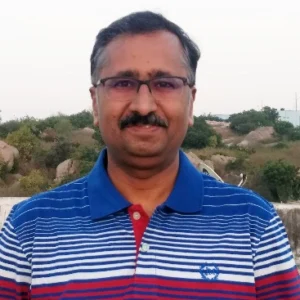 Dr. S. Srinath
Dr. S. Srinath
Dr. S. Srinath is working as a Professor in School of Physics, University of Hyderabad, India. He received his Bachelor's and Master's degree in Physics from Osmania University and M.Phil., Ph.D. from University of Hyderabad. Dr. Srinath has worked as Scientist “SD” in Institute for Plasma Research (IPR), Gujarat in 2001. Dr. Srinath worked as a post-doctoral fellow at Argonne National laboratory, U. S. A. (2002-2004) and University of South Florida (2004-2006) before joining School of Physics, University of Hyderabad in 2006 as an Assistant Professor and is a full Professor in the School of Physics, University of Hyderabad since 2016.
9. 30th September 2021 (Thursday) at 02:30 pm - 3:30 pm Mumbai, Kolkata, New Delhi, Venue: MS Teams
Title: Smart Functional Polymeric Materials for Energy and Biomedical Applications
Dr. S. Vengatesan
Senior Scientist, Electrochemical Process Engineering Division, CSIR – Central Electrochemical Research Institute, Karaikudi
- Venue
- Read Abstract
- About the Speaker
Venue: MS Teams
Polymer / polymer composite materials find diverse applications in automotive, aerospace, military, medical and sports fields. Energy and medical fields are considered to be the top-most sectors where enormous challenges daunting in front of mankind in the 21st century. ‘Hydrogen', an eco-friendly and zero emission fuel is forecasted as a promising renewable energy source in automotive sector. Water electrolysis is an efficient electro-chemical process that can produce very pure hydrogen (>99.99%) from water. Water electrolyser basically consists of anode, cathode electrodes and ion-conducting electrolyte. State-of-the art polymer electrolyte membrane (PEM) electrolyser technology uses thin polymer membrane as electrolyte that reduces the overall cell resistance. Nafion®, a commercial fluorocarbon membrane widely used in these systems is very expensive that increase the capital cost of the electrolyser systems. Besides, the synthesis of fluorinated polymers is a tedious and burdensome process. Here, our main focus is on developing cheaper hydrocarbon based membranes with good ionic conductivity and stability. The role of the different polymers and their compositions on the physio-chemical properties of the membranes are investigated in detail.

Yet another emerging field where the polymer composite finds unique application is biomedical sector, especially in tissue engineering. Metal based implants widely used in tissue engineering are heavy-weight which can't satisfy the requirements of tissue restoration or regeneration. The replacement of damaged tissues and bones are inevitable by means of polymer composite scaffolds / implants, since the polymers have the flexible mechanical properties. Here, our focus is mainly on developing bio-degradable polymers as scaffolds/fibrous materials that have good biocompatibility, cytocompatibility and antibacterial properties.
 Dr. Vengatesan Singaram
Dr. Vengatesan Singaram is currently working as a senior scientist in CSIR-Central Electrochemical Research Institute (CECRI), Karaikudi, Tamilnadu, India. He has received his B. Sc degree in Chemistry from Bharathidasan University, Trichy and M. Sc in Applied Chemistry from Anna University, Chennai. He has also obtained M. Tech degree from Indian Institute of Technology Delhi, New Delhi. Later, he completed his Ph.D degree in the research field of PEM fuel cells at Korea Institute of Science and Technology, South Korea. Further, he carried out post-doctoral research at University of Waterloo, Canada for more than two years in durability assessment of PEM fuel cells. He has more than 15 years of research experience and expertise in the arena of material synthesis, polymer chemistry and electrochemistry. His research theme mainly focuses on the development of ion-exchange membranes/separators for water electrolysers, fuel cells and flow batteries. He has also been working in the development of polymer composite fibers, scaffolds for biomedical applications. As a credential to his scientific research, he has published more than 25 articles in reputed SCI journals and filed 1 US patent and 2 Indian patent in his research field. He has attended more than 50 international and national conferences/symposia and presented his research work. Moreover, he has been serving as a reviewer of many international reputed journals as well as DAC member of research scholars. He is currently an honorary fellow of the Australian institute of high energetic materials, Australia.
Dr. Vengatesan Singaram
Dr. Vengatesan Singaram is currently working as a senior scientist in CSIR-Central Electrochemical Research Institute (CECRI), Karaikudi, Tamilnadu, India. He has received his B. Sc degree in Chemistry from Bharathidasan University, Trichy and M. Sc in Applied Chemistry from Anna University, Chennai. He has also obtained M. Tech degree from Indian Institute of Technology Delhi, New Delhi. Later, he completed his Ph.D degree in the research field of PEM fuel cells at Korea Institute of Science and Technology, South Korea. Further, he carried out post-doctoral research at University of Waterloo, Canada for more than two years in durability assessment of PEM fuel cells. He has more than 15 years of research experience and expertise in the arena of material synthesis, polymer chemistry and electrochemistry. His research theme mainly focuses on the development of ion-exchange membranes/separators for water electrolysers, fuel cells and flow batteries. He has also been working in the development of polymer composite fibers, scaffolds for biomedical applications. As a credential to his scientific research, he has published more than 25 articles in reputed SCI journals and filed 1 US patent and 2 Indian patent in his research field. He has attended more than 50 international and national conferences/symposia and presented his research work. Moreover, he has been serving as a reviewer of many international reputed journals as well as DAC member of research scholars. He is currently an honorary fellow of the Australian institute of high energetic materials, Australia. 10. 29th october 2021 (Friday) at 03:00 pm - 04:00 pm Mumbai, Kolkata, New Delhi, Venue: MS Teams
Title: Advanced Materials for Structural Applications
Dr. Hari Krishna KODURU
Experienced Researcher, “Petar Beron i NIE” Fellowship holder Bulgarian National Scientific Program, Bulgarian Academy of Sciences, Bulgaria, Sofia.
Click Here to View More
- Venue
- Read Abstract
- About the Speaker
Venue: MS Teams
Metamaterials promise to alleviate the classical limitations of optics and led to exotic applications such as negative refraction, sub-wavelength resolution imaging, invisibility devices and perfect absorbers. Enhancement of spontaneous emission is a dynamic and challenging fundamental quantum phenomenon in optics and in nutshell it opens new avenues for spectrum of futuristic applications. In this light, novel grating coupled hyperbolic metamaterial configuration for the enhancement of spontaneous emission rate of dye molecules by exploiting the unique property of a hypergrating to outcouple and extract the non-radiative plasmonic modes.
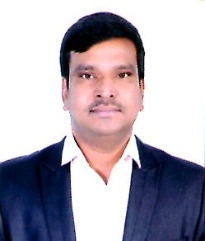 Dr. Hari Krishna KODURU
Dr. Hari Krishna KODURU
Dr. Hari Krishna KODURU did his Master of Philosophy in Physics from Sri Venkateswara University, Tirupathi. During his M. Phil he carried out his research work on “Pulsed laser deposited LiMn2O4 Thin films for Cathode application in Li – ion battery”. He completed Ph.D. degree from University of Calabria, Calabria, Italy during 2012-2015. During his Ph.D. he carried out a joint research works on “Hyperbolic Metamaterials for the enhancement of spontaneous emission application” under the guidance of Prof. Giuseppe Strangi, Case Western Reserve University, Ohio, Cleveland, USA and on “Solid nanocomposite polymer electrolyte membranes for sodium ion battery applications” under the guidance of Prof. Nicola Scaramuzza, UNICAL, ITALY. He has the ability work in metal oxide thin films and polymer nanocomposite membranes using different fabrication techniques. He has published 30 research articles in reputed national and international journals. He is the first Indian, who got selected for Bulgarian country prestigious National Fellowship called Petar Beron i NIE and to work as an Experienced Researcher in Bulgarian Academy of Sciences, Bulgaria, Sofia.
11. 25th November 2021 (Thursday) at 11:00 am - 12:30 pm, Venue: MS Teams
Title: Optoelectronic Thin Films for Flexible Electronics
Dr. Weijie Song
Research Professor, Ningbo Institute of Material Technology and Engineering, Chinese Academy of Sciences, Ningbo, P. R. China
- Venue
- Read Abstract
- About the Speaker
Venue: MS Teams
Metamaterials promise to alleviate the classical limitations of optics and led to exotic applications such as negative refraction, sub-wavelength resolution imaging, invisibility devices and perfect absorbers. Enhancement of spontaneous emission is a dynamic and challenging fundamental quantum phenomenon in optics and in nutshell it opens new avenues for spectrum of futuristic applications. In this light, novel grating coupled hyperbolic metamaterial configuration for the enhancement of spontaneous emission rate of dye molecules by exploiting the unique property of a hypergrating to outcouple and extract the non-radiative plasmonic modes.
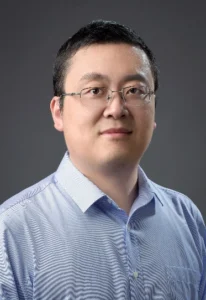 Dr. Weijie Song
Dr. Weijie Song
Dr. Weijie Song is currently a research professor in Ningbo Institute of Material Technology and Engineering, Chinese Academy of Sciences, People's Republic of China. He obtained PhD degree in physical chemistry in 2002 from Tsinghua University. He continued his postdoc study in National Institute for Materials Scicence, Japan for four and a half years before joining CAS as a research professor and group leader of flexible electronic materials. Currently, he is mainly working on materials and devices for flexible electronics, including transparent conductive materials, anti-reflection coatings, thin film photovoltaics, smart windows, and wearable sensors. He has published over 220 paper in international journals, with over 3200 citations and h-index of 29. He also holds over 60 patents.
12. 17th December 2021 (Friday) at 12:10 pm - 01:10 pm (IST), Venue: MS Teams
Title: Functional electronic application s based on heterogeneously integrated complex oxide films
Prof. Xiao Renshaw Wang
Assistant Professor, School of Physical and Mathematical Science and School of Electrical and Electronic Engineering, Nanyang Technological University, Singapore
- Venue
- Read Abstract
- About the Speaker
Venue: MS Teams
Keywords: Complex oxide , interface heterogeneous integration, multifunctionality
Heterogeneous integration, where dissimilar layers of materials and functionalities are unrestrictedly stacked at an atomic scale, is crucial to next-generation electronics, such as multi-functional, neuromorphic, spintronic and ultra-low power devices. In particular, when artificially integrating the naturally incompatible atomic structures, crystallographic orientations and physical functionalities, the interplays at the interfaces induce unexpected functionalities, which is beneficial to future electronics in the aspect of manipulation, functionalization and utilization. However, realizing unrestricted heterogeneous integration and their electronic applications is extremely challenging, because of the technical restrictions of fabrication and the unwanted reduction of interface quality. The challenges are particularly severe in the heterogeneous integration of oxides with either other emerging materials or existing Si technologies, because of the incompatible growth dynamics and large lattice mismatch.
In this talk, I will discuss our recent exploration of functional electronic devices based on heterogeneous integration of complex oxide films. First, I will provide a brief overview of our recent contribution to the progress of the emergent functionalities in oxide heterostructures with an emphasis is on perovskite oxides. Then, I will compare various possible approaches to heterogeneously integrating the oxide films with other materials systems by elaborating on their fabrication processes and specifically discussing their technical challenges. Last, I will discuss on experimental results of the related electronic applications based on the heterogeneously integrated complex oxide films.
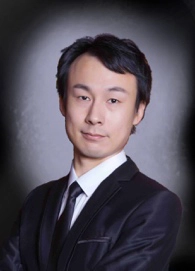 Prof. Xiao Renshaw Wang
Prof. Xiao Renshaw Wang
Xiao Renshaw Wang is currently Nanyang Assistant Professor in School of Physical and Mathematical Sciences and School of Electrical and Electronic Engineering at Nanyang Technological University (NTU, Singapore). He received his Bachelor degree from Shandong University (SDU, China) in 2008 and the Ph.D. degree from National University of Singapore (NUS, Singapore) in 2012. Subsequently, he continued his postdoctoral research at University of Twente (Netherlands), Massachusetts Insitute of Technology (MIT, USA) and SMART (Singapore). His research interests include oxide fabrication, oxide electrochemistry and oxide spintronics/electronics. His group website is : http://renshawlab.com



